WWW
-
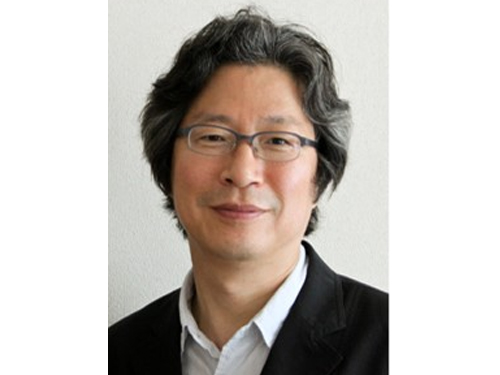 The Journal of Clinical Investigation: Researchers Uncover the Secret Lymphatic Identity of the Schlemm's Canal
The Journal of Clinical Investigation (JCI), a peer-reviewed, top-tier medical journal published by the American Society for Clinical Investigation, carried a commentary entitled “Schlemm’s Canal: More Than Meets the Eye, Lymphatics in Disguise” in the July 25, 2014 issue.
In the commentary, the authors compared a research paper (“Lymphatic regular PROX1 determines Schlemm’s canal integrity and identity”) by Professor Gou-Young Koh of the Graduate School of Medical Science and Engineering at KAIST with research work from the University of Helsinki (article entitled “The Schlemm’s canal is a VEGF-C/VEGFR-3 responsive lymphatic-like vessel”).
The JCI released a press statement dated July 25, 2014 on its commentary. It mentioned that glaucoma, one of the leading causes of blindness worldwide, elevates eye pressure owing to poor drainage of aqueous humor. A specialized structure called “Schlemm’s canal” funnels aqueous humor from the eye back into circulation, which is critical to prevent pressure buildup in the eye. The article discussed the role of Schlemm’s canal in the context of lymphatic vascular characteristics by reviewing two research group’s papers back-to-back.
For the full text of the press release, please visit the link below:
Press Release from the Journal of Clinical Investigation, July 25, 2014
“Researchers uncover the secret lymphatic identity of the Schlemm’s canal”
http://www.eurekalert.org/pub_releases/2014-07/joci-rut072414.php
2014.07.28 View 9712
The Journal of Clinical Investigation: Researchers Uncover the Secret Lymphatic Identity of the Schlemm's Canal
The Journal of Clinical Investigation (JCI), a peer-reviewed, top-tier medical journal published by the American Society for Clinical Investigation, carried a commentary entitled “Schlemm’s Canal: More Than Meets the Eye, Lymphatics in Disguise” in the July 25, 2014 issue.
In the commentary, the authors compared a research paper (“Lymphatic regular PROX1 determines Schlemm’s canal integrity and identity”) by Professor Gou-Young Koh of the Graduate School of Medical Science and Engineering at KAIST with research work from the University of Helsinki (article entitled “The Schlemm’s canal is a VEGF-C/VEGFR-3 responsive lymphatic-like vessel”).
The JCI released a press statement dated July 25, 2014 on its commentary. It mentioned that glaucoma, one of the leading causes of blindness worldwide, elevates eye pressure owing to poor drainage of aqueous humor. A specialized structure called “Schlemm’s canal” funnels aqueous humor from the eye back into circulation, which is critical to prevent pressure buildup in the eye. The article discussed the role of Schlemm’s canal in the context of lymphatic vascular characteristics by reviewing two research group’s papers back-to-back.
For the full text of the press release, please visit the link below:
Press Release from the Journal of Clinical Investigation, July 25, 2014
“Researchers uncover the secret lymphatic identity of the Schlemm’s canal”
http://www.eurekalert.org/pub_releases/2014-07/joci-rut072414.php
2014.07.28 View 9712 -
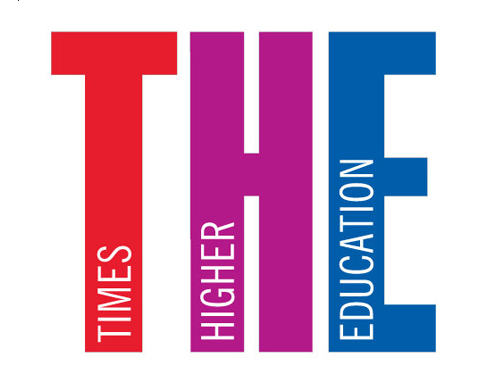 Times Higher Education magazine features KAIST, July 2014
The Times Higher Education (THE) has featured KAIST in an article entitled “Young Universities’ Secrets of Success” dated on July 17, 2014.
The magazine chose five universities from the Times Higher Education's 100 Under 50 2014 rankings: KAIST, Koç University in Turkey, Maastricht University in Netherlands, Nanyang Technological University in Singapore, and Hong Kong Polytechnic University, China. These universities are less than 50 years old.
The article highlighted some of their current efforts to deliver quality administrative service for students and professors as well as innovative education and research programs to set them apart from long-established elite universities such as Harvard and Cambridge.
For the full text, please visit the link below:
Times Higher Education, July 17, 2014
“Young Universities’ Secret of Success”
http://www.kaist.ac.kr/Upl/downfile/THE's_Article_Jul_17_2014.pdf
2014.07.23 View 7596
Times Higher Education magazine features KAIST, July 2014
The Times Higher Education (THE) has featured KAIST in an article entitled “Young Universities’ Secrets of Success” dated on July 17, 2014.
The magazine chose five universities from the Times Higher Education's 100 Under 50 2014 rankings: KAIST, Koç University in Turkey, Maastricht University in Netherlands, Nanyang Technological University in Singapore, and Hong Kong Polytechnic University, China. These universities are less than 50 years old.
The article highlighted some of their current efforts to deliver quality administrative service for students and professors as well as innovative education and research programs to set them apart from long-established elite universities such as Harvard and Cambridge.
For the full text, please visit the link below:
Times Higher Education, July 17, 2014
“Young Universities’ Secret of Success”
http://www.kaist.ac.kr/Upl/downfile/THE's_Article_Jul_17_2014.pdf
2014.07.23 View 7596 -
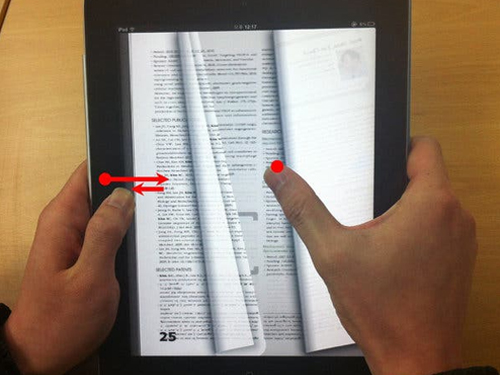 Smart eBook appeared in New York Times on May 17, 2014
Smart eBook (hhttp://www.youtube.com/watch?v=rVyBwz1-AiE), an interface that allows e-book readers to have the similar experience and convenience to reading paper books, was introduced in an article from the New York Times on May 17, 2014. The Smart eBook was developed by researchers from the Institute for Information Technology Convergence at KAIST.
For the article, please go to the link below:
New York Times, May 17, 2014
“Tackling the Limits of Touch Screens”
http://www.nytimes.com/2014/05/18/business/tackling-the-limits-of-touch-screens.html?_r=0
2014.07.21 View 7194
Smart eBook appeared in New York Times on May 17, 2014
Smart eBook (hhttp://www.youtube.com/watch?v=rVyBwz1-AiE), an interface that allows e-book readers to have the similar experience and convenience to reading paper books, was introduced in an article from the New York Times on May 17, 2014. The Smart eBook was developed by researchers from the Institute for Information Technology Convergence at KAIST.
For the article, please go to the link below:
New York Times, May 17, 2014
“Tackling the Limits of Touch Screens”
http://www.nytimes.com/2014/05/18/business/tackling-the-limits-of-touch-screens.html?_r=0
2014.07.21 View 7194 -
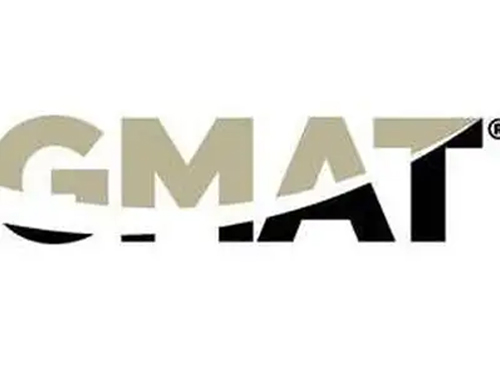 Interview with KAIST MBA: 5 Reasons to Study in Korea for Your MBA
The Graduate Management Admission Council (GMAC) published online an interview with Mija Yoon, the director of the Admission & Placement Center at KAIST College of Business (KAIST MBA) in Seoul, Korea, on July 18, 2014.
In the interview, Director Yoon listed the benefits of studying MBA programs at Korean universities, as well as working in Korea.
For the article, please visit the link below:
GMAT, July 18, 2014
“5 Reasons to Study in Korea for Your MBA”
http://www.beatthegmat.com/mba/2014/07/18/5-reasons-to-study-in-korea-for-your-mba
2014.07.21 View 10552
Interview with KAIST MBA: 5 Reasons to Study in Korea for Your MBA
The Graduate Management Admission Council (GMAC) published online an interview with Mija Yoon, the director of the Admission & Placement Center at KAIST College of Business (KAIST MBA) in Seoul, Korea, on July 18, 2014.
In the interview, Director Yoon listed the benefits of studying MBA programs at Korean universities, as well as working in Korea.
For the article, please visit the link below:
GMAT, July 18, 2014
“5 Reasons to Study in Korea for Your MBA”
http://www.beatthegmat.com/mba/2014/07/18/5-reasons-to-study-in-korea-for-your-mba
2014.07.21 View 10552 -
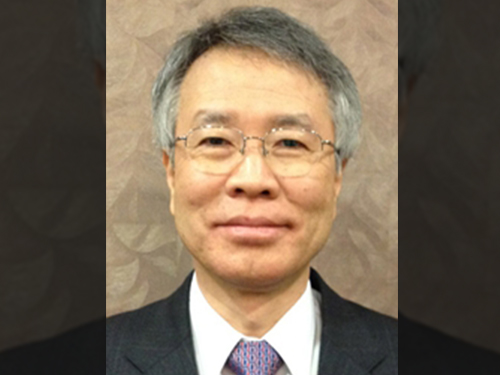 Professor Kyu-Young Whang Receives Contributions Award from ACM SIGMOD
Kyu-Young Whang, Distinguished Professor of Computer Science at KAIST, was the recipient of the 2014 ACM SIGMOND Contributions Award.
Founded in 1947, the Association for Computing Machinery (ACM) is the world’s largest educational and scientific computing society, delivering resources that advance computing as a science and profession.
SIGMOD is the Association for Computing Machinery’s Special Interest Group on Management of Data, which specializes in large-scale data management problems and databases.
Since 1992, ACM SIGMOND has presented the contributions award to one scientist who has made significant contributions to the field of database systems through research funding, education, and professional services. So far, 23 people including Professor Whang have received the award.
Professor Whang was recognized for his key role in the growth of international conferences and journals in the field of databases such as The VLDB Journal (The International Journal on Very Large Data Bases), VLDB Endowment Inc., IEEE Technical Committee on Data Engineering, and Database Systems for Advanced Applications (DASFAA). IEEE stands for the Institute of Electrical and Electronics Engineering.
For the full list of ACM SIGMOND Contributions Award recipients, please go to
http://www.sigmod.org/sigmod-awards/sigmod-awards#contributions.
2014.07.15 View 11041
Professor Kyu-Young Whang Receives Contributions Award from ACM SIGMOD
Kyu-Young Whang, Distinguished Professor of Computer Science at KAIST, was the recipient of the 2014 ACM SIGMOND Contributions Award.
Founded in 1947, the Association for Computing Machinery (ACM) is the world’s largest educational and scientific computing society, delivering resources that advance computing as a science and profession.
SIGMOD is the Association for Computing Machinery’s Special Interest Group on Management of Data, which specializes in large-scale data management problems and databases.
Since 1992, ACM SIGMOND has presented the contributions award to one scientist who has made significant contributions to the field of database systems through research funding, education, and professional services. So far, 23 people including Professor Whang have received the award.
Professor Whang was recognized for his key role in the growth of international conferences and journals in the field of databases such as The VLDB Journal (The International Journal on Very Large Data Bases), VLDB Endowment Inc., IEEE Technical Committee on Data Engineering, and Database Systems for Advanced Applications (DASFAA). IEEE stands for the Institute of Electrical and Electronics Engineering.
For the full list of ACM SIGMOND Contributions Award recipients, please go to
http://www.sigmod.org/sigmod-awards/sigmod-awards#contributions.
2014.07.15 View 11041 -
 KAIST develops TransWall, a transparent touchable display wall
At a busy shopping mall, shoppers walk by store windows to find attractive items to purchase. Through the windows, shoppers can see the products displayed, but may have a hard time imagining doing something beyond just looking, such as touching the displayed items or communicating with sales assistants inside the store. With TransWall, however, window shopping could become more fun and real than ever before.
Woohun Lee, a professor of Industrial Design at KAIST, and his research team have recently developed TransWall, a two-sided, touchable, and transparent display wall that greatly enhances users' interpersonal experiences.
With an incorporated surface transducer, TransWall offers audio and vibrotactile feedback to the users. As a result, people can collaborate via a shared see-through display and communicate with one another by talking or even touching one another through the wall. A holographic screen film is inserted between the sheets of plexiglass, and beam projectors installed on each side of the wall project images that are reflected.
TransWall is touch-sensitive on both sides. Two users standing face-to-face on each side of the wall can touch the same spot at the same time without any physical interference. When this happens, TransWall provides the users with specific visual, acoustic, and vibrotactile experiences, allowing them to feel as if they are touching one another.
Professor Lee said, "TransWall concept enables people to see, hear, or even touch others through the wall while enjoying gaming and interpersonal communication. TransWall can be installed inside buildings, such as shopping centers, museums, and theme parks, for people to have an opportunity to collaborate even with strangers in a natural way."
He further added that "TransWall will be useful in places that require physical isolation for high security and safety, germ-free rooms in hospitals, for example." TransWall will allow patients to interact with family and friends without compromising medical safety.
TransWall was exhibited at the 2014 Conference on Computer-Human Interaction (CHI) held from April 26, 2014 to May 1, 2014 in Toronto, Canada.
YouTube Link:
http://www.youtube.com/watch?v=1QdYC_kOQ_w&list=PLXmuftxI6pTXuyjjrGFlcN5YFTKZinDhK
2014.07.15 View 8790
KAIST develops TransWall, a transparent touchable display wall
At a busy shopping mall, shoppers walk by store windows to find attractive items to purchase. Through the windows, shoppers can see the products displayed, but may have a hard time imagining doing something beyond just looking, such as touching the displayed items or communicating with sales assistants inside the store. With TransWall, however, window shopping could become more fun and real than ever before.
Woohun Lee, a professor of Industrial Design at KAIST, and his research team have recently developed TransWall, a two-sided, touchable, and transparent display wall that greatly enhances users' interpersonal experiences.
With an incorporated surface transducer, TransWall offers audio and vibrotactile feedback to the users. As a result, people can collaborate via a shared see-through display and communicate with one another by talking or even touching one another through the wall. A holographic screen film is inserted between the sheets of plexiglass, and beam projectors installed on each side of the wall project images that are reflected.
TransWall is touch-sensitive on both sides. Two users standing face-to-face on each side of the wall can touch the same spot at the same time without any physical interference. When this happens, TransWall provides the users with specific visual, acoustic, and vibrotactile experiences, allowing them to feel as if they are touching one another.
Professor Lee said, "TransWall concept enables people to see, hear, or even touch others through the wall while enjoying gaming and interpersonal communication. TransWall can be installed inside buildings, such as shopping centers, museums, and theme parks, for people to have an opportunity to collaborate even with strangers in a natural way."
He further added that "TransWall will be useful in places that require physical isolation for high security and safety, germ-free rooms in hospitals, for example." TransWall will allow patients to interact with family and friends without compromising medical safety.
TransWall was exhibited at the 2014 Conference on Computer-Human Interaction (CHI) held from April 26, 2014 to May 1, 2014 in Toronto, Canada.
YouTube Link:
http://www.youtube.com/watch?v=1QdYC_kOQ_w&list=PLXmuftxI6pTXuyjjrGFlcN5YFTKZinDhK
2014.07.15 View 8790 -
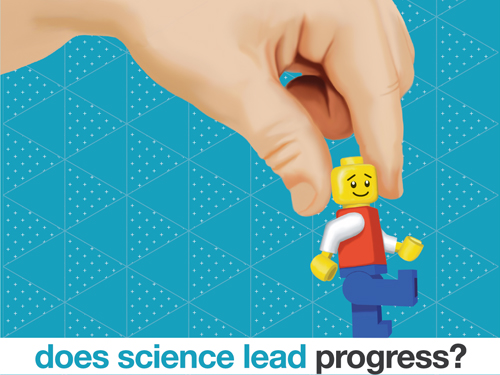 The ICISTS-KAIST International Conference from August 4-8, 2014 in KAIST Campus, Korea
"Does science lead progress?"
This thought-provoking question will be explored this summer with hundreds of university students gathered from all around the world at the campus of the Korea Advanced Institute of Science and Technology (KAIST), a leading science and technology university in Korea.
Established in 2005, the International Conference for Integration of Science, Technology and Society (ICISTS)-KAIST has been hosted every summer for Korean and international university students in Daejeon, Republic of Korea. The conference features distinguished speakers from academia, business, and public sectors and enables participants to exchange views, identify issues affecting science and society, and explore possible solutions.
The ICISTS-KAIST is the largest interdisciplinary conference in Asia. It is organized by undergraduate students of KAIST and promotes the idea of a science- and technology-integrated society through international cooperation of college students from diverse backgrounds. Last year alone, about 400 participants from 103 universities in 25 countries attended the conference.
Marking the 10th anniversary, the ICISTS-KAIST International Conference 2014 will scrutinize the fundamental aspect of scientific and technological progress versus social advancement under the theme of "Does Science Lead Progress?"
"We hope that the conference provides students with an interactive platform to look into some of the essential, yet easily neglected, questions such as the purpose of science and technology education in a broader context of social values," said Dong-Yeon Woo, President of Organizing Committee for the ICISTS-KAIST International Conference 2014.
Among keynote speakers are Langdon Winner, a professor of Science and Technology Studies at Rensselaer Polytechnic Institute, Stephen Hilgartner, an associate professor of Science and Technology Studies at Cornell University, and Steve Breyman, an associate professor of Science and Technology Studies at Rensselaer Polytechnic Institute.
Langdon Winner will speak about the fallacy of the public perception that technological innovation leads to social revolution (his presentation is entitled "The Myth of Innovation"). Stephen Hilgartner will present four aspects of the politics of vision in today's science and technology ("Science, Technology, and the Politics of Vision"), and Steve Breyman will talk about the origin of scientific deception, misrepresentation, and prevarication ("The Agnotology of Hydrofracking").
The conference lasts five days, beginning on August 4th through August 8th, 2014 at KAIST campus. For participation, regular online application opens until July 11, 2014 at http://www.icists.org.
2014.07.04 View 11081
The ICISTS-KAIST International Conference from August 4-8, 2014 in KAIST Campus, Korea
"Does science lead progress?"
This thought-provoking question will be explored this summer with hundreds of university students gathered from all around the world at the campus of the Korea Advanced Institute of Science and Technology (KAIST), a leading science and technology university in Korea.
Established in 2005, the International Conference for Integration of Science, Technology and Society (ICISTS)-KAIST has been hosted every summer for Korean and international university students in Daejeon, Republic of Korea. The conference features distinguished speakers from academia, business, and public sectors and enables participants to exchange views, identify issues affecting science and society, and explore possible solutions.
The ICISTS-KAIST is the largest interdisciplinary conference in Asia. It is organized by undergraduate students of KAIST and promotes the idea of a science- and technology-integrated society through international cooperation of college students from diverse backgrounds. Last year alone, about 400 participants from 103 universities in 25 countries attended the conference.
Marking the 10th anniversary, the ICISTS-KAIST International Conference 2014 will scrutinize the fundamental aspect of scientific and technological progress versus social advancement under the theme of "Does Science Lead Progress?"
"We hope that the conference provides students with an interactive platform to look into some of the essential, yet easily neglected, questions such as the purpose of science and technology education in a broader context of social values," said Dong-Yeon Woo, President of Organizing Committee for the ICISTS-KAIST International Conference 2014.
Among keynote speakers are Langdon Winner, a professor of Science and Technology Studies at Rensselaer Polytechnic Institute, Stephen Hilgartner, an associate professor of Science and Technology Studies at Cornell University, and Steve Breyman, an associate professor of Science and Technology Studies at Rensselaer Polytechnic Institute.
Langdon Winner will speak about the fallacy of the public perception that technological innovation leads to social revolution (his presentation is entitled "The Myth of Innovation"). Stephen Hilgartner will present four aspects of the politics of vision in today's science and technology ("Science, Technology, and the Politics of Vision"), and Steve Breyman will talk about the origin of scientific deception, misrepresentation, and prevarication ("The Agnotology of Hydrofracking").
The conference lasts five days, beginning on August 4th through August 8th, 2014 at KAIST campus. For participation, regular online application opens until July 11, 2014 at http://www.icists.org.
2014.07.04 View 11081 -
 JEROS, a jellyfish exterminating robot, appears in a US business and technology news
Business Insider, a US business and technology news website launched in 2006 and based in New York City, published a story about JEROS, a robot that disposes of ever-increasing jellyfish in the ocean.
JEROS was the brainchild of Professor Hyun Myung at the Department of Civil and Environmental Engineering, KAIST. It can shred almost one tons worth of jellyfish per hour.
For the story, please visit the following link:
Business Insider, June 24, 2014
“These Jellyfish-Killing Robots Could Save the Fishing Industry Billions Per Year”
http://www.businessinsider.com/jellyfish-killing-robot-2014-6
JEROS in action
2014.06.26 View 10569
JEROS, a jellyfish exterminating robot, appears in a US business and technology news
Business Insider, a US business and technology news website launched in 2006 and based in New York City, published a story about JEROS, a robot that disposes of ever-increasing jellyfish in the ocean.
JEROS was the brainchild of Professor Hyun Myung at the Department of Civil and Environmental Engineering, KAIST. It can shred almost one tons worth of jellyfish per hour.
For the story, please visit the following link:
Business Insider, June 24, 2014
“These Jellyfish-Killing Robots Could Save the Fishing Industry Billions Per Year”
http://www.businessinsider.com/jellyfish-killing-robot-2014-6
JEROS in action
2014.06.26 View 10569 -
 Forbes Asia: 48 Heroes of Philanthropy
Mun-Sul Jeong
Hui-Jeong Park
Forbes Asia, an American business magazine covering the latest news on Asian markets, politics, business, and finance, announced the list of 48 philanthropists in the Asia-Pacific region in its July 21, 2014 issue.
Four Koreans made the list: Mun-Sul Jeong (a former chairman of KAIST's Board of Trustees), Hui-Jeong Park (a wife of the late Dr. Geun-Chul Ryu, a philanthropist who gave the funds to build the Sports Complex in KAIST campus), Yuna Kim (a former Olympics figure skater and a gold and silver medalist), and Nam-Kyu Min (the chairman of JK Group, a plastics and petrochemical products manufacturer).
Mun-Sul Jeong, the founder of Mirae Corp., a semiconductor equipment manufacturing company, donated $21 million to KAIST for brain science research this year. He also donated $235 million to KAIST in 2001 for convergence research in information and business technology.
Hui-Jeong Park, a former professor of nursing at Korea University, endowed a $100,000 scholarship fund for KAIST students in January 2014. Her late husband, Dr. Geun-Chul Ryu, contributed over $55 million in real estate to KAIST, allowing the university to have a new sports facility. He was an eminent doctor of Oriental medicine in Korea and also served as a professor at KAIST.
For more, please click on the link below:
Forbes Asia, July 21, 2014
“48 Heroes of Philanthropy”
http://www.forbes.com/sites/johnkoppisch/2014/06/25/48-heroes-of-philanthropy-3/
2014.06.26 View 10849
Forbes Asia: 48 Heroes of Philanthropy
Mun-Sul Jeong
Hui-Jeong Park
Forbes Asia, an American business magazine covering the latest news on Asian markets, politics, business, and finance, announced the list of 48 philanthropists in the Asia-Pacific region in its July 21, 2014 issue.
Four Koreans made the list: Mun-Sul Jeong (a former chairman of KAIST's Board of Trustees), Hui-Jeong Park (a wife of the late Dr. Geun-Chul Ryu, a philanthropist who gave the funds to build the Sports Complex in KAIST campus), Yuna Kim (a former Olympics figure skater and a gold and silver medalist), and Nam-Kyu Min (the chairman of JK Group, a plastics and petrochemical products manufacturer).
Mun-Sul Jeong, the founder of Mirae Corp., a semiconductor equipment manufacturing company, donated $21 million to KAIST for brain science research this year. He also donated $235 million to KAIST in 2001 for convergence research in information and business technology.
Hui-Jeong Park, a former professor of nursing at Korea University, endowed a $100,000 scholarship fund for KAIST students in January 2014. Her late husband, Dr. Geun-Chul Ryu, contributed over $55 million in real estate to KAIST, allowing the university to have a new sports facility. He was an eminent doctor of Oriental medicine in Korea and also served as a professor at KAIST.
For more, please click on the link below:
Forbes Asia, July 21, 2014
“48 Heroes of Philanthropy”
http://www.forbes.com/sites/johnkoppisch/2014/06/25/48-heroes-of-philanthropy-3/
2014.06.26 View 10849 -
 KAIST Researchers Develops Sensor That Reads Emotional States of Users
A piloerection monitoring sensor attached on the skin
The American Institute of Physics distributed a press release dated June 24, 2014 on a research paper written by a KAIST research team, which was published in its journal entitled Applied Physics Letters (APL). APL features concise, up-to-date reports in significant new findings in applied physics.
According to the release, “KAIST researchers have developed a flexible, wearable 20 mm x 20 mm polymer sensor that can directly measure the degree and occurrence on the skin of goose bumps, which is caused by sudden changes in body temperature or emotional states.”
The lead researcher was Professor Young-Ho Cho from the Department of Bio and Brain Engineering at KAIST.
If you would like to read the press release, please go to the link below:
American Institute of Physics, June 24, 2014
“New technology: The goose bump sensor”
http://www.eurekalert.org/pub_releases/2014-06/aiop-ntt062314.php
2014.06.26 View 9643
KAIST Researchers Develops Sensor That Reads Emotional States of Users
A piloerection monitoring sensor attached on the skin
The American Institute of Physics distributed a press release dated June 24, 2014 on a research paper written by a KAIST research team, which was published in its journal entitled Applied Physics Letters (APL). APL features concise, up-to-date reports in significant new findings in applied physics.
According to the release, “KAIST researchers have developed a flexible, wearable 20 mm x 20 mm polymer sensor that can directly measure the degree and occurrence on the skin of goose bumps, which is caused by sudden changes in body temperature or emotional states.”
The lead researcher was Professor Young-Ho Cho from the Department of Bio and Brain Engineering at KAIST.
If you would like to read the press release, please go to the link below:
American Institute of Physics, June 24, 2014
“New technology: The goose bump sensor”
http://www.eurekalert.org/pub_releases/2014-06/aiop-ntt062314.php
2014.06.26 View 9643 -
 The First Demonstration of a Self-powered Cardiac Pacemaker
As the number of pacemakers implanted each year reaches into the millions worldwide, improving the lifespan of pacemaker batteries has been of great concern for developers and manufacturers. Currently, pacemaker batteries last seven years on average, requiring frequent replacements, which may pose patients to a potential risk involved in medical procedures.
A research team from the Korea Advanced Institute of Science and Technology (KAIST), headed by Professor Keon Jae Lee of the Department of Materials Science and Engineering at KAIST and Professor Boyoung Joung, M.D. of the Division of Cardiology at Severance Hospital of Yonsei University, has developed a self-powered artificial cardiac pacemaker that is operated semi-permanently by a flexible piezoelectric nanogenerator.
The artificial cardiac pacemaker is widely acknowledged as medical equipment that is integrated into the human body to regulate the heartbeats through electrical stimulation to contract the cardiac muscles of people who suffer from arrhythmia. However, repeated surgeries to replace pacemaker batteries have exposed elderly patients to health risks such as infections or severe bleeding during operations.
The team’s newly designed flexible piezoelectric nanogenerator directly stimulated a living rat’s heart using electrical energy converted from the small body movements of the rat. This technology could facilitate the use of self-powered flexible energy harvesters, not only prolonging the lifetime of cardiac pacemakers but also realizing real-time heart monitoring.
The research team fabricated high-performance flexible nanogenerators utilizing a bulk single-crystal PMN-PT thin film (iBULe Photonics). The harvested energy reached up to 8.2 V and 0.22 mA by bending and pushing motions, which were high enough values to directly stimulate the rat’s heart.
Professor Keon Jae Lee said:
“For clinical purposes, the current achievement will benefit the development of self-powered cardiac pacemakers as well as prevent heart attacks via the real-time diagnosis of heart arrhythmia. In addition, the flexible piezoelectric nanogenerator could also be utilized as an electrical source for various implantable medical devices.”
This research result was described in the April online issue of Advanced Materials (“Self-Powered Cardiac Pacemaker Enabled by Flexible Single Crystalline PMN-PT Piezoelectric Energy Harvester”: http://onlinelibrary.wiley.com/doi/10.1002/adma.201400562/abstract).
Youtube link: http://www.youtube.com/watch?v=ZWYT2cU_Mog&feature=youtu.be
Picture Caption: A self-powered cardiac pacemaker is enabled by a flexible piezoelectric energy harvester.
2014.06.25 View 18817
The First Demonstration of a Self-powered Cardiac Pacemaker
As the number of pacemakers implanted each year reaches into the millions worldwide, improving the lifespan of pacemaker batteries has been of great concern for developers and manufacturers. Currently, pacemaker batteries last seven years on average, requiring frequent replacements, which may pose patients to a potential risk involved in medical procedures.
A research team from the Korea Advanced Institute of Science and Technology (KAIST), headed by Professor Keon Jae Lee of the Department of Materials Science and Engineering at KAIST and Professor Boyoung Joung, M.D. of the Division of Cardiology at Severance Hospital of Yonsei University, has developed a self-powered artificial cardiac pacemaker that is operated semi-permanently by a flexible piezoelectric nanogenerator.
The artificial cardiac pacemaker is widely acknowledged as medical equipment that is integrated into the human body to regulate the heartbeats through electrical stimulation to contract the cardiac muscles of people who suffer from arrhythmia. However, repeated surgeries to replace pacemaker batteries have exposed elderly patients to health risks such as infections or severe bleeding during operations.
The team’s newly designed flexible piezoelectric nanogenerator directly stimulated a living rat’s heart using electrical energy converted from the small body movements of the rat. This technology could facilitate the use of self-powered flexible energy harvesters, not only prolonging the lifetime of cardiac pacemakers but also realizing real-time heart monitoring.
The research team fabricated high-performance flexible nanogenerators utilizing a bulk single-crystal PMN-PT thin film (iBULe Photonics). The harvested energy reached up to 8.2 V and 0.22 mA by bending and pushing motions, which were high enough values to directly stimulate the rat’s heart.
Professor Keon Jae Lee said:
“For clinical purposes, the current achievement will benefit the development of self-powered cardiac pacemakers as well as prevent heart attacks via the real-time diagnosis of heart arrhythmia. In addition, the flexible piezoelectric nanogenerator could also be utilized as an electrical source for various implantable medical devices.”
This research result was described in the April online issue of Advanced Materials (“Self-Powered Cardiac Pacemaker Enabled by Flexible Single Crystalline PMN-PT Piezoelectric Energy Harvester”: http://onlinelibrary.wiley.com/doi/10.1002/adma.201400562/abstract).
Youtube link: http://www.youtube.com/watch?v=ZWYT2cU_Mog&feature=youtu.be
Picture Caption: A self-powered cardiac pacemaker is enabled by a flexible piezoelectric energy harvester.
2014.06.25 View 18817 -
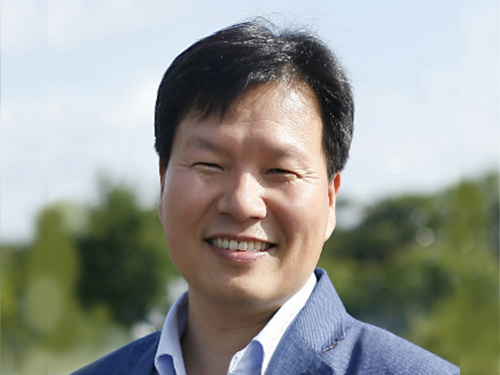 Professor Won Do Heo on LED Light Technology for Controlling Proteins in Living Cells
With the newly developed LED technology, Professor Won Do Heo at the College of Life Science and Bioengineering, KAIST, was able to suppress cell migration and division when cells are exposed to LED light. This suggests a breakthrough to apply in future cancer cell research.
Professor Heo talked about the impact of his research in the following excerpt from a news article:
“We are already conducting research on the spread of cancer, as well as brain science in animal models with the Light-Activated Reversible Inhibition by Assembled Trap. I believe this technology will be a breakthrough in investigating cancer treatments and the function of neurons in a complex neural network, which existing technologies have not been able to do.”
From EE Times Europe, June 19, 2014
“LED Light Technology Controls Proteins in Living Cells”
http://www.ledlighting-eetimes.com/en/led-light-technology-controls-proteins-in-living-cells.html?cmp_id=7&news_id=222909336
2014.06.22 View 8931
Professor Won Do Heo on LED Light Technology for Controlling Proteins in Living Cells
With the newly developed LED technology, Professor Won Do Heo at the College of Life Science and Bioengineering, KAIST, was able to suppress cell migration and division when cells are exposed to LED light. This suggests a breakthrough to apply in future cancer cell research.
Professor Heo talked about the impact of his research in the following excerpt from a news article:
“We are already conducting research on the spread of cancer, as well as brain science in animal models with the Light-Activated Reversible Inhibition by Assembled Trap. I believe this technology will be a breakthrough in investigating cancer treatments and the function of neurons in a complex neural network, which existing technologies have not been able to do.”
From EE Times Europe, June 19, 2014
“LED Light Technology Controls Proteins in Living Cells”
http://www.ledlighting-eetimes.com/en/led-light-technology-controls-proteins-in-living-cells.html?cmp_id=7&news_id=222909336
2014.06.22 View 8931